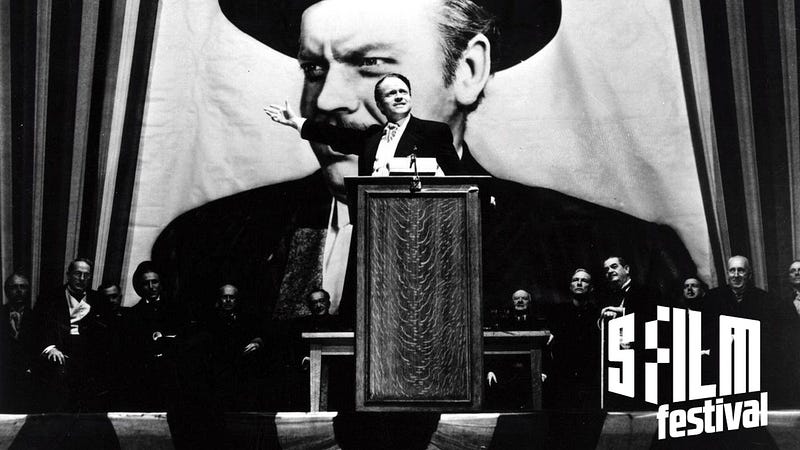THE WILL OF GIANTS
THE WILL OF GIANTS
Citizen Kane with William R. Hearst III

On a ferocious, rain-swept Thursday evening in downtown San Francisco, the winds battered against the Yerba Buena Center for the Arts as enthusiastic film lovers sat down to drink in a bit of living history, in the form of a long-awaited conversation that would take place between preeminent film historian David Thomson, and a man who is the grandson of the primary inspiration for Citizen Kane’s titular Charles Foster Kane, William R. Hearst III. As SFFILM’s Executive Director, Noah Cowan, expressed before the two took the stage… “It took me two years to get up the nerve to ask Will if he’d be willing to do this.”
The intensity of the bleed-through between the real-life William Randolph Hearst, and the on-screen depiction of newspaper tycoon-cum-failed Presidential candidate, Charles Foster Kane, continues to fascinate film fans and historians alike nearly eighty years since the film first arrived amid a hailstorm of controversy. Hearst sought to bury the movie, and many took his side against the awesomely talented, headstrong Orson Welles, whose equal roles as reckless provocateur and dazzling cinematic storyteller engendered uphill professional struggles that would ultimately leave him a seemingly distraught, morbidly obese old man whose fate didn’t seem so far removed from that of his portrayal of Kane nearly two generations prior.
Those hoping the Hearst clan are still harboring any kind of grudge against the film would have been disappointed to hear Will say how much he was a fan of the film upon first seeing it in college, and how he continues to find the film’s characters a fascinating marriage of composites of key figures from his grandfather’s heyday. The only thing he personally finds inaccurate is the portrayal of Xanadu, the film’s version of the Hearst family’s San Simeon estate. “Xanadu was really dark and depressing, and the San Simeon I think of is white walls and so much sunlight!”
Of course, the sheer technical innovation of the film’s narrative structure, married with Greg Tolland’s stunning black and white photography, in-camera visual effects, and Welles’s magnetic, multi-generational performance, come together to create an emotionally enthralling experience with Kane’s sheer abundance of craft so evident nearly four generations later. The theme of powerful men using the media to gain prominence to satisfy an unending need for more continue to resonate in America (perhaps uncomfortably so in 2017) and the film still serves as an uncannily relevant mirror into the dark underbelly of a nation built upon the feverish appetites of men like Charles Foster Kane.
Watch the full conversation below.
Cheers,
James J. Jefferies
Subscribe for more exciting interviews, reviews, and news from SFFILM!